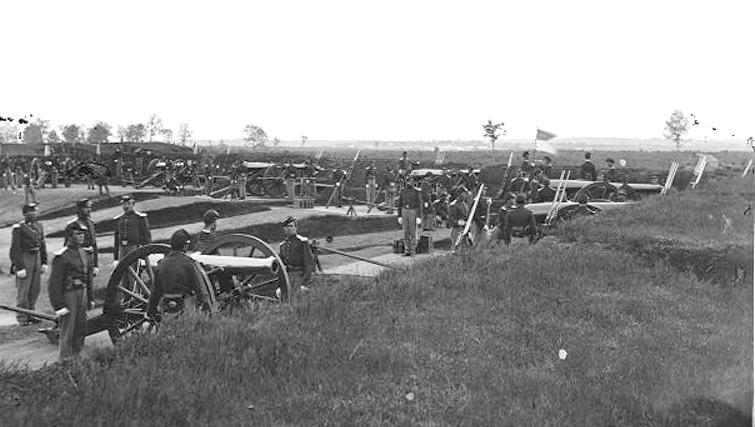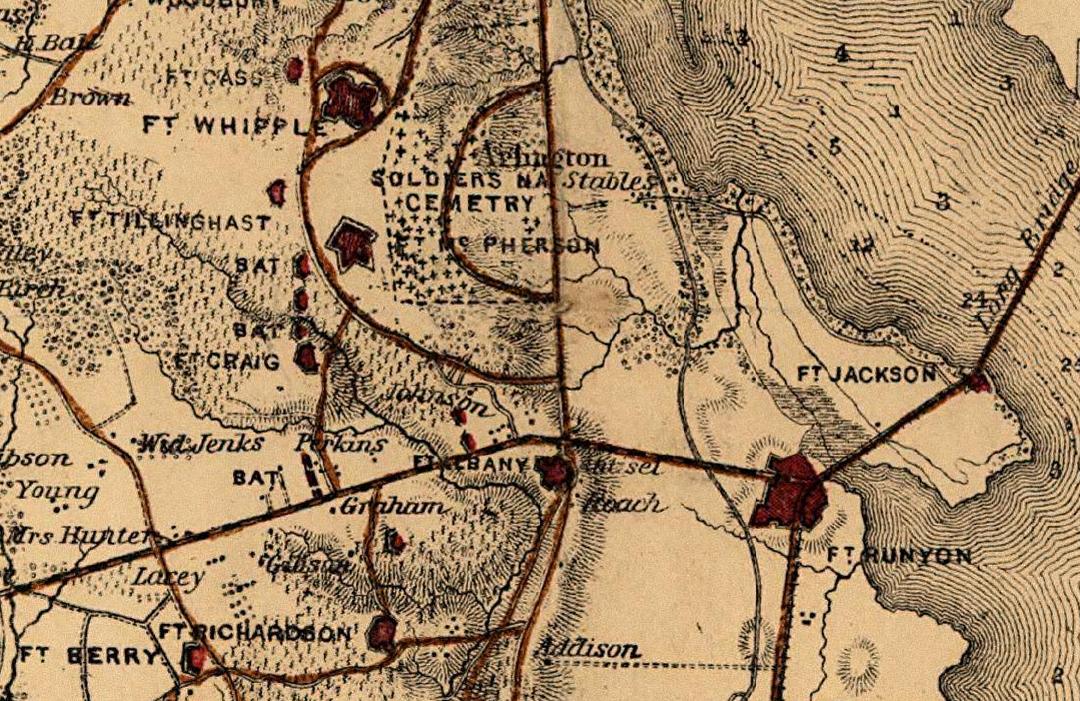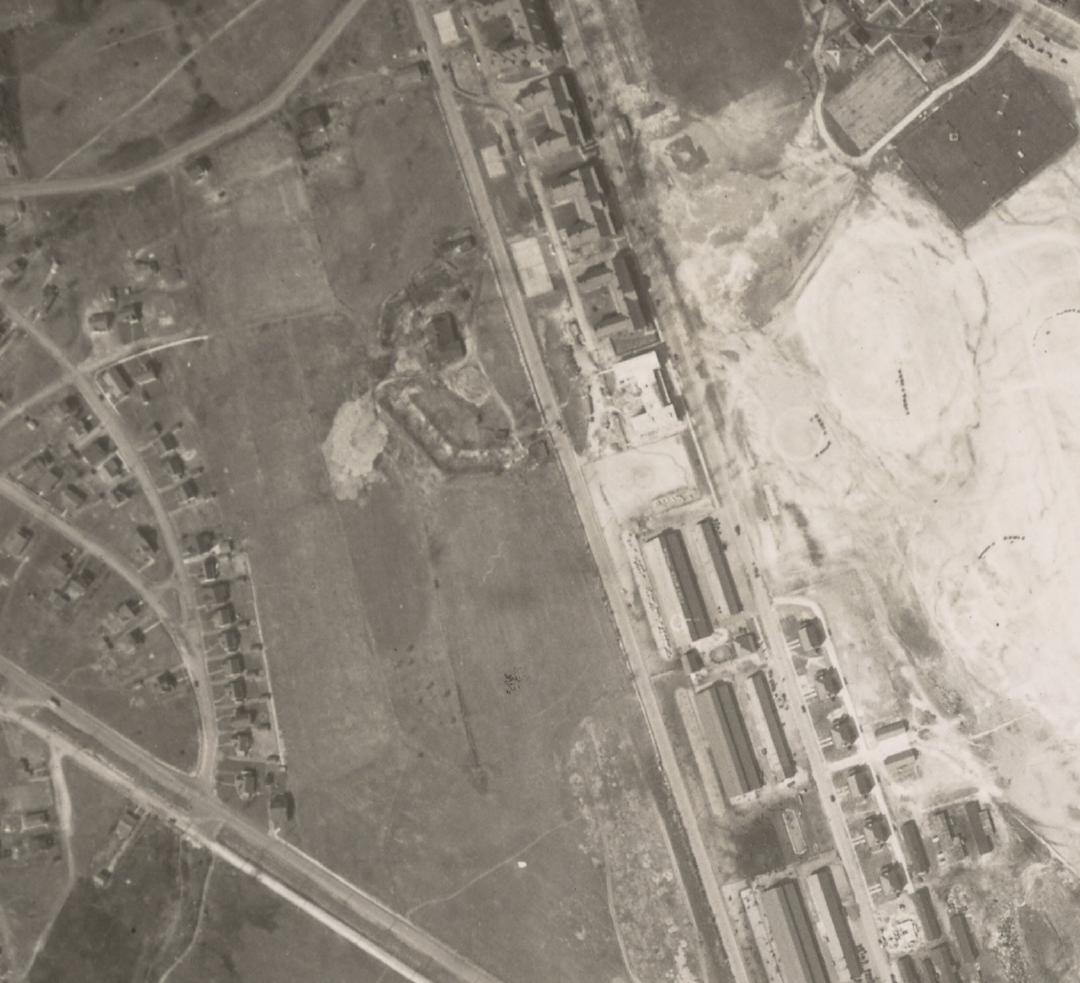Fort Whipple

Today's Fort Myer traces its origin as a military post to the Civil War.
Fort Myer traces its origin as a military post to the Civil War. It was originally called Fort Whipple and on February 4, 1881 it was renamed Fort Myer. The acres encompassing Fort Myer and Arlington National Cemetery were called Arlington Heights when they were owned in the 1800s the Arlington Heights were owned by George Washington Parke Custis, the grandson of Martha Washington and step-grandson of George Washington.
After Custis' death in 1857, the property was inherited by his daughter, Mary Anna Randolph Custis Lee, the wife of Robert E. Lee. The land was confiscated by the government. Part of the estate became Arlington National Cemetery, and the remainder became Ft. Whipple, named in honor of Maj. Gen. Amiel Weeks Whipple, a division commander at Fort Cass which was established in August 1861 where the stables are today.
Whipple was a West Point graduate and became a topographical engineer and made maps, first to map the US-Mexico border and then to help plan transcontinental railroad routes. At the outbreak of the Civil War, he was the commander of the Union’s nascent balloon reconnaissance unit and he flew over the Confederate lines at the first Battle of Bull Run. He later became chief map maker for the army and his maps were used on many Virginia battlefields. Whipple had earlier served a short stint as commander of the defenses of Washington, with his headquarters at the Custis-Lee mansion; while there, he reportedly was visited frequently by President Abraham Lincoln, who would have lunch with him while receiving updates. Lincoln also developed a relationship with Whipple's two sons; after Whipple's death, the older son received a presidential appointment to the US Military Academy, and the younger received an appointment to the U.S. Naval Academy.
Whipple was killed at the battle of Chancellorsville in 1863. He had two forts named after him, one in Arizona and the one in Virginia. Fort Whipple’s high elevation made it ideal for visual communication and the Signal Corps took it over in the late 1860s. Brigadier General Albert J. Myer commanded Fort Whipple and, in 1866, was appointed the Army's first chief signal officer, a post he held until his death in 1880. Myer was telegrapher and he was also a surgeon. But his major interest became the development of signaling codes and methods which were adopted by the US Army just before the start of the Civil War. He organized and commanded the new signal corps and wrote the Signal Corps manual used by both the army and the navy.
After the war, his duties also included tracking storms that could impact communications and the US Weather Bureau began under his command. Fort Whipple was renamed Fort Myer the year after Myer died to honor the late chief signal officer and to eliminate confusion created by the other Fort Whipple in Arizona.
Images



